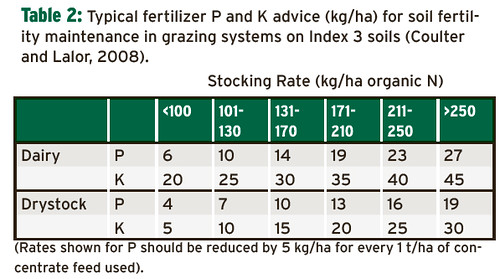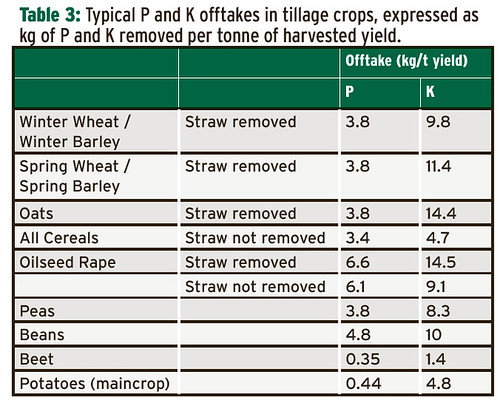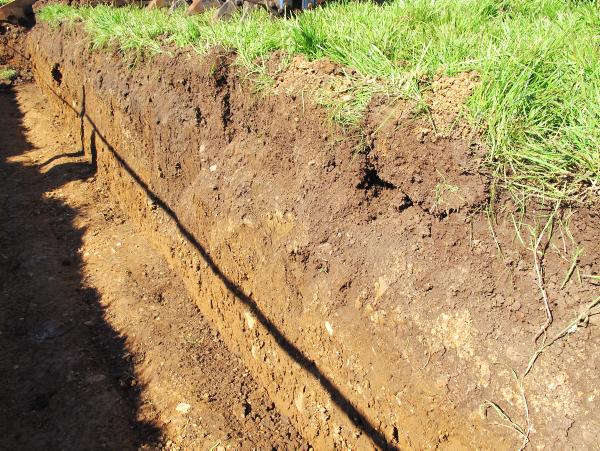Only approximately 25% of soil samples analysed through Teagasc in 2012 had soil P and K levels in the optimum soil fertility range, commonly referred to as Index 3. This means that 75% of the soils analysed were outside the range of what is desirable in an agronomic and environmental sense.
Productive soils are the foundation of any successful farm system. The increasing demand for high grass growth rates and crop yields represents an increasing demand on soil fertility levels.
Therefore, the management of soil fertility levels should be a primary objective on any farm. Fertilizers account for a significant proportion of direct production costs on farms, but fertilizer costs represent good value for money when used correctly.
However, fertilizer application rates that are either too low, too high, or not in balance with other soil fertility factors will yield lower returns on investment. With fertilizers becoming more expensive, it is vital that fertilizer is managed as efficiently as possible with maximum return in farm produce.
The objective of this article is to focus on the importance of balancing nutrient inputs against nutrient offtakes.
Soil analysis results
A review of soil samples taken on farms and analysed through Teagasc indicates a large diversity in soil fertility levels on farms. The results of samples analysed in 2012 over all farm systems is shown in Figure 1.

The results indicate that a relatively small proportion (only approximately 25%) of the soil analysed are in the optimum soil fertility range of Index 3.
These results indicate how important it is to have soil analysis results for a farm. In many cases, advice for Index 3 soils is assumed where soil test results are not available. In the absence of a soil test result, the advice is likely to be inappropriate in 75% of cases!
There is also a need to consider each nutrient separately.
A soil that is low in P is not necessarily low in K, and vice versa. A lot of the commentary on nutrient management and fertilizers focus on P, while neglecting to consider other nutrients as being equally critical. The GAP (Nitrates) Regulations (Anon, 2010) are an explanation for this given that they focus exclusively on P from a soil testing perspective.
However, giving all nutrients in the fertilizer blend equal consideration is very important. In some cases, this may mean a requirement for more diversity in the mix of NPK fertilizer blends available, or a move at farm level to greater adoption of straight P or K products or zero P and zero K blends.
Replacing offtake
Knowing how much nutrients are leaving the farm in produce is the key step to knowing how much fertilizer needs to be applied. In a tillage context, the level of offtake varies between crops and between years (mainly through yield variation). In a grassland system, the offtake will depend on the farm system (e.g. dairy will be different to drystock) and the stocking rate. In some cases, such as with P in concentrate feeds fed to grazing animals, inputs into the farm can help offset the nutrient removal.
To assist in combining these factors when devising a fertilizer programme for a crop, The Fertilizer Association of Ireland, in collaboration with Teagasc and K+S UK & Eire Ltd, has published a ‘Nutrient Calculator Wheel’. This ready reckoner can be used in the field to estimate P and K offtakes for grassland and tillage crops.
The P and K offtakes assumed in the wheel are based on a combination of existing advice in Ireland and the UK.
Offtakes in grazing systems
The offtakes of P and K in grassland farming systems depend principally on the farm system and the stocking rate. Offtakes are normally calculated on the basis of whole farm nutrient balancers that estimate the net nutrient removal counting in the P and K removed in milk or meat. Inputs are also included; most notably the P contained in concentrate feeds. The standard P and K offtakes from dairy, grazing and drystock are shown in Table 2.

It should be noted that the rates shown for P should be reduced where concentrate feeds are used on the farm. The simplest way of adjusting for concentrate feeds is to calculate the tonnes of concentrates used on the farm per hectare by dividing the total concentrate feed usage, by the total grassland area in hectares, and multiplying by 5. This equation assumes an average P content in concentrate feeds of 5 kg/t. However, many straight or compound feeds may differ from this default value. True P contents of individual feeds should be used where they are known. In many cases, it can happen that the P in the concentrate feed will balance the full P offtake; hence the P fertilizer advice can be reduced to 0 kg/ha.
Offtakes in silage
The P and K offtakes of a grass silage field can be estimated from the dry matter (DM) yield of silage removed. The standard P and K advice for silage in Ireland assumes a crop yield of 5 t ha-1 of DM, and a P and K offtake of 20 kg/ha of P, and 125 kg/ha of K. However, the P and K offtake of any grass silage crop can be estimated based on the DM yield and by assuming P offtake of 4 kg/t of DM, and K offtake of 25 kg/t of DM.
Offtakes in Tillage crops
The offtakes of P and K in tillage crops can also be estimated based on the yield of the crop. Typical offtakes of P and K from a range of tillage crops are shown in Table 3.

Aside from harvested yield, the choice to remove straw as well as grain can have an impact on the total offtake. This is particularly true of K in cereal crops, where the straw represents a greater proportion of the K than the grain does. However, the effect of straw removal on P offtake is minimal, as most of the P in a cereal crop is in the grain.
Converting offtake to a fertilizer recommendation
Generating a fertilizer programme requires combining the offtake and the soil test result. Linking the soil test result to the offtake of the crop allows the nutrient application rate to be adjusted for additional requirements for build-up if in Index 1 or 2, and for reduced application rates in high fertility Index 4 soils. The fertilizer programme should also take into account nutrient sources that may be available in the form of organic manures.
Typical build up rates for P in grassland are 20 kg/ha/yr on Index 1 soils, and 10 kg/ha/yr on Index 2 soils. This additional P for build up needs to be applied annually until a soil test indicates an increase in soil P. Build up rates for K in grassland are 60 kg/ha/yr on Index 1, and 30 kg/ha/yr on Index 2.
The right fertilizer product
One option is to apply an organic fertilizer to supply all or part of some of the nutrients. Grassland or mixed farms will have organic manures available on the farm. Other farms may have the option of importing organic fertilizers. Either way, organic fertilizers can be a very cost effective source of nutrients, particularly where soil fertility is low.
The final step in the fertilizer recommendation is to select a fertilizer product (or mix of products) that supply the required application rates in the correct balance.
Standard products may not suit all situations, so mixes of NP and straight K products may help in allowing sufficient scope for variation of P and K application between fields. The fertilizer selection should also complement any organic fertilizers that are applied to the crop.
GAP (Nitrates) cross compliance
The formulation of fertilizer programmes for individual fields based on individual crop offtakes and soil test results being recommended in this paper needs to be cross-checked against the total N and P allowance on the farm in compliance with the GAP (Nitrates) Regulations.
Adjustments to the fertilizer programme may be required to comply with the regulations. However, it is important to highlight thatit is only N and P that are controlled by the regulations.
The farmer has freedom of choice in how to manage other nutrients such as lime.
*This article is from the Farmers Journal archive. It was first published on 9 February 2013.






 This is a subscriber-only article
This is a subscriber-only article











SHARING OPTIONS: